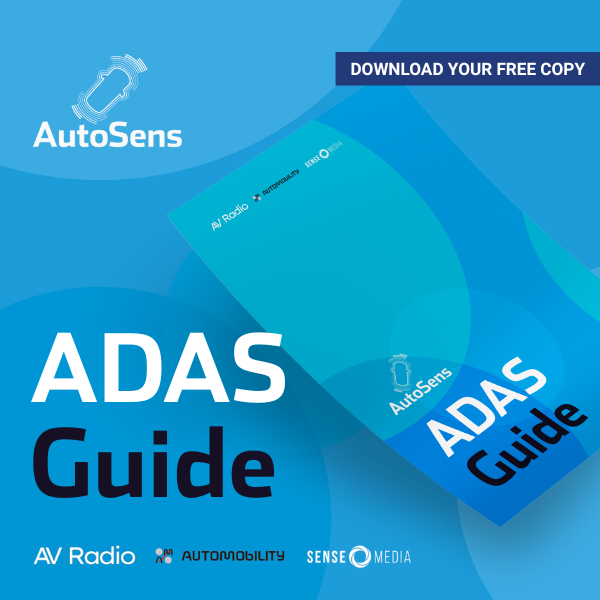We spoke with Caroline Chung, Engineering Manager at Magna to find out more about the panel session she participated in at InCabin Phoenix in March covering ‘What’s next for in-cabin? Future outlooks for technology, industry & regulation’. See what she had to say…
1. At InCabin Phoenix you participated on a panel about the outlook of in-cabin technology and regulation. What makes you passionate about this topic?
The technology in the in-cabin space is on an exciting trajectory, and a lot of that has been fueled by regulatory efforts across the globe. We’re at a point where we can mitigate or even fully solve many issues caused previously by not knowing the state of the driver or the classification and status of the various passengers in the vehicle. I love our mission in this rapidly growing area!
2. What are you surprised not to see trending in the industry that should be?
Motor vehicle crashes are the leading cause of death for teens in the United States. That’s 2,800 teen deaths in 2020 alone, and much of that risk is within the first few months of receiving their license. How do we use our technology to guide younger drivers on avoiding or reducing risks in those critical months? I think we’ve got an important application for the technology we’re developing that might require a different human factors strategy. This will require the ecosystem of OEMs, Tier 1s, and potentially even insurance companies to come together to collaborate.
3. Are there any new players in the industry who you find interesting?
There are a few new players in interior cabin synthetic data generation that are highly of interest, as data generation has largely been focused on exterior applications or just the driver. We’re hoping that more emerge and can provide this key service, as it will only help expedite the advancement of features and algorithms.
4. What led Magna to get involved in the in-cabin industry?
It’s in our DNA at Magna to develop technologies that prevent accidents and injuries, and the in-cabin space perfectly fits with that mission. It’s one of the newer spaces where the industry is still coalescing on what this area will look like in both the short and long term. The impact you can make is huge, and we aim to continue to be market leaders in this segment. From the safety and regulatory based applications of “now,” to the “vehicle as a 3rd space” in the near horizon, there is a great outlook for technology development.
5. Tell us about a few of the most interesting applications you are working on for in-cabin sensing.
Another aspect of our Magna DNA is to “show,” not just “tell,” so we’d love for everyone to stop by our booth and see for yourselves. We’d also enjoy a discussion with the industry at large, so please also reach out to schedule a meeting.
6. What else are Magna providing for the in-cabin industry?
We strongly believe that sensor fusion is the key to advance the technology in the in-cabin space, and that no single modality can reliably address the issues and edge cases. Magna has a strong background of ADAS technology that can be adapted to the interior of the vehicle. Whether that’s radar, camera-based, 3D imaging, thermal solutions, or other sensor hardware, we can leverage our existing product portfolio. We are also able to provide solutions on any level of the centralization/decentralization scale, from fully “smart” modules to strategies where the algorithms are supported on central compute.
7. Of course, we all heard the news on the recent acquisition of Veoneer by Magna, any other cool partnerships you can tell us about?
Yes, Veoneer is excited about our acquisition by Magna! We look forward to leveraging Magna’s strengths and advancing our development in this space together. Research is a key element in this growing field, and we look forward to showcasing our partnership and collaboration efforts with our various university partners in the next few months.
8. We understand you are working on intoxication detection, what does success look like for this project and for this technology?
Success for us is always adoption. It’s going to require the industry to come together as a whole and drive this topic for the technology to make it to production in a near-term timeline. Research funding and grants, regulatory requirements, industry partnerships, various consortium workgroups, and OEM input and support are all critical. Our goal for this year’s InCabin showcase is to advance the conversation on what we think is a possible solution and generate some positive discussion and feedback.
9. What should OEMs or Regulators know about when designing requirements?
It always takes a considerable amount of time for an update in regulations, so both OEMs and regulators should be prepared for candid discussions on how to allow for technology deployment before the regulations can potentially “catch up.” I see a significant need for collaboration on this front, through upfront technology and roadmap mutual sharing, development discussions and demos, and finally either swift regulatory updates or production allowances.
To hear more about the future of in-cabin, join us at InCabin USA 2024! Book your pass here.



